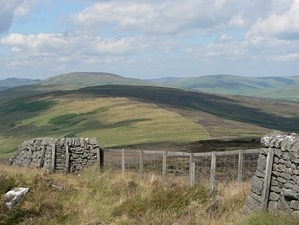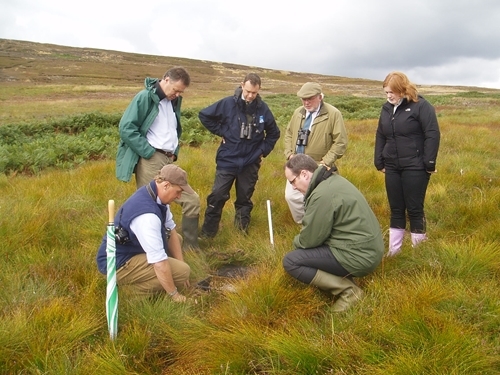 The Langholm Moor Demonstration Project was launched in September 2007 and work started in early 2008, running until 2018. The ten-year project aimed to reconcile grouse moor and raptor interests with the core objective of re-establishing Langholm Moor as a driven grouse moor while maintaining a viable population of hen harriers.
The Langholm Moor Demonstration Project was launched in September 2007 and work started in early 2008, running until 2018. The ten-year project aimed to reconcile grouse moor and raptor interests with the core objective of re-establishing Langholm Moor as a driven grouse moor while maintaining a viable population of hen harriers.
The project was based on Langholm Moor partly because it was the principal site for the Joint Raptor Study between 1992 and 1997. During that project, hen harrier numbers increased, peaking at 20 breeding females in 1997. Because of predation by hen harriers, red grouse showed a corresponding decline in numbers and, as a result of the reduction in grouse numbers, the estate redeployed or laid off the gamekeepers, and management of the moor largely stopped.
The new project restarted intensive grouse moor management with a team of five keepers, under head keeper, Simon Lester. In addition to predator control, heather burning and use of medicated grit to control strongyle worms, diversionary food was given to all breeding hen harriers to help reduce predation on red grouse. A team of ecologists counted the numbers of harriers, grouse, waders, other birds, small mammals and predators.
 Paul Wheelhouse MSP visits Langholm Moor in September 2013
Paul Wheelhouse MSP visits Langholm Moor in September 2013
In 2008 four males, but only two female hen harriers appeared on the moor, similar numbers as observed in recent years. Both females nested and fledged four and five young. This is the highest number of harriers that have fledged at Langholm since 2001. Both nests were given diversionary food (day-old cockerel chicks and white rats), and over 1,000 of these were taken from the feeding posts by the harriers. Nests were watched to identify prey delivered to the harrier chicks. Of 106 items observed, 103 were identified. Most were passerines (54%) or diversionary food (23%). No grouse, or grouse chicks were recorded being brought to the harrier nests, though grouse are still at low numbers on the moor.
Red grouse have been counted within the same ten 50-hectare areas in spring and July/early August since 1992 and this continued throughout the project. In addition, we also surveyed grouse along 35 kilometres of transects running across the heather ground.
The Langholm Moor Demonstration Project was a partnership between the Game & Wildlife Conservation Trust, Scottish Natural Heritage, Buccleuch Estates, RSPB and Natural England. For more information about the project, visit www.langholmproject.com.